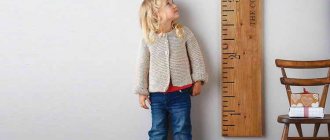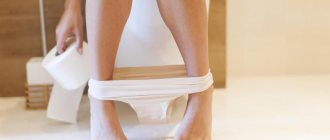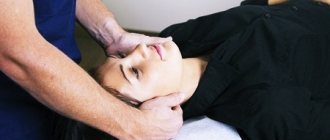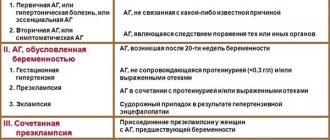Compression types
To maintain the veins of different parts of the leg, socks, stockings and tights are worn. Elastic bandages are rarely used.
Knee socks
Socks support the veins on the calves in the initial stage of varicose veins, with slight swelling. The shape, similar to gaiters, is intended for the ankle. The sockless stocking provides support around the knee. Manufacturers of medical knitwear have learned to beautifully and unobtrusively dress patients in the phlebology department. Therefore, support socks are no different from regular ones.
Stockings
Compression stockings can be worn with dresses and skirts, and you can simply wear them to go to the toilet, which you have to do often during pregnancy. Silicone holders prevent stockings from sliding down. Most often, if you have problems with veins during pregnancy, stockings are chosen. The summer version with an open toe can be worn under sandals.
Tights
Tights help cope with the expansion of veins on the thighs and above. But the top can put pressure on your stomach. Tight tights are hot in summer. Therefore, this type of compression garment is not very popular.
Elastic bandage
Compression bandages are worn to prevent varicose veins in the first trimester of pregnancy. The elastic band is secured on the leg with clips. They may come undone under clothing, but the bandages can be worn at home. They are easier to care for. But during pregnancy, stockings are more often prescribed.
To choose the type of compression hosiery, you need to find out about the condition of the blood vessels from a doctor, and then determine the therapeutic class of compression.
How to put on and wear compression garments
Compression knitwear differs from ordinary tights and stockings in that the fiber density is quite high. You need to wear such underwear correctly, only in this case you can get the desired effect. Experts give the following recommendations:
- Pay attention to your pedicure. If the nails are quite long, they need to be trimmed and filed, otherwise the stockings may quickly tear;
- Also take a closer look at the skin of your feet. It should be smooth, not rough. If there are cracks or calluses, get rid of them. Otherwise, the linen will stretch in these places and the fibers will become thin;
- Never wear stockings with rings on the toes; there is a risk of making a hole in the knitwear;
- At first, experts advise using disposable or household gloves. Over time, there will be no need for them;
- You need to put on your underwear dry, and your skin should not be damp. In this case, the fit will be correct and tight;
- If possible, it is better to put on stockings immediately after waking up, without getting out of bed. Doctors explain this by saying that the legs are not swollen at this time;
- You need to raise your legs a little, insert the foot into the “footprint”, fix the heel so that it fits tightly into the stocking;
- Next, put the tights on your leg, helping yourself with your palms;
- If wrinkles appear, they must be carefully smoothed out with your hands without touching the integrity of the fibers.
Be prepared for the fact that you will have to practice a little at first. If a woman is of large size and has a rather large belly, then perhaps it makes sense to buy a special device that will greatly facilitate the process of putting on stockings.
Classes
Compression garments are differentiated by the strength of the pressure. The higher the class, the stronger the compression.
Prophylactic
Prophylactic stockings are designed for hiking and sports training. If there are no signs of varicose veins, they are worn for several hours a day.
First
The stocking supports enlarged veins and is indicated for spider veins on the surface of the skin, tired legs and cramps in the evening. The first compression is intended to be worn continuously to prevent blood from pooling in the deep veins.
Second
Second compression stockings are needed for thrombophlebitis and varicose veins, when nodes have formed in the veins.
Third
High compression improves blood flow in severe venous insufficiency.
Fourth
Products with higher compression are prescribed for severe swelling for lymphatic drainage. They are indicated for chronic varicose veins, thrombophlebitis, thromboembolism.
See also
How does the dairy kitchen work and who can use its products?
Compression classes
ClassCompression indicatorRecommendations for useFirst up to 23 mm Hg. Art. Disorders during pregnancy:- enlarged veins;
- spider veins;
- leg pain.
- varicose veins;
- thrombophlebitis.
- venous insufficiency with disorders;
- trophics:
- swelling.
To size
Typically, the sizes of compression knitwear correspond to the parameters of the international grid, where there are symbols: S, M, L, XL, XXL, XXXL. They correspond to the following tabular data.
Material
Compression jersey is made from elastic cotton threads, nylon, microfiber, lycra. Hosiery products are aesthetically pleasing. They have no seams. The production process involves treating the fibers with antibacterial agents. The stockings meet hygienic requirements, which means they are hypoallergenic and breathable.
Compression garments are created using the latest computer technologies that correctly redistribute the pressure force to control areas of the lower extremities.
An additional bonus of some models is lace. It gives the stockings an elegant look. Any woman feels confident and comfortable in such a product.
Color
The most common colors of medical knitwear: black, beige. Many manufacturers produce stockings only in standard colors. White products are less common. Well-known brands produce compression garments in a variety of colors: smoky, ruby, topaz, coffee and other color variations. The cost of such stockings is 1600-3200 rubles.
Chinese manufacturers offer a choice of underwear in blue, brown, and red. But the quality of such products is questioned. It is easy to recognize a fake at a low price.
Price
The cost of compression garments depends on the manufacturer, composition and degree of compression. On average, the price varies from 800 to 1000 rubles.
Therapeutic effect
Varicose veins develop during pregnancy due to increased blood clotting. In the last months, the fetus compresses the pelvic vessels. The veins receive uneven load, and blood circulation in the legs worsens.
The therapeutic effect of compression garments is that the pressure is evenly distributed along the leg. As a result, blood and lymph do not stagnate in the veins.
Depending on the stage of the disease, a compression class is selected. When choosing on your own, you can make a big mistake. Excessive pressure will worsen the condition. Therefore, you need to contact a phlebologist for help. The doctor will accurately determine the problem area of the circulatory system and what level of pressure is necessary to relieve it.
Chronic venous insufficiency
The disease occurs due to a malfunction of the venous valves. As a result, blood from the veins does not return to the heart, but moves randomly, stagnates and collects in clots. The pressure in the blood vessels increases and the veins dilate.
Compression knitwear regulates the movement of blood, which helps improve the functioning of the valves.
Tired legs
Gaining weight and slowing blood circulation make your legs get tired faster. Weakening of the walls of blood vessels contributes to rapid fatigue. Thick stockings will support them from the outside, and evening leg fatigue will disappear.
Swelling at the end of the day
The cause of edema is vasodilation and lymph stagnation. Compression class 1-2 underwear stimulates the work of the lymphatic ducts and relieves high pressure in the blood vessels.
Painful sensations
Leg pain also occurs due to high pressure in the blood vessels. If you sit or lie down with your legs raised, the flow of blood to the extremities will decrease and the discomfort will also decrease.
To prevent pain from appearing, you need to wear compression socks or stockings during the day.
Cramps in the calf muscles
Lack of potassium and magnesium is the cause of cramps in the calf muscles. If they are accompanied by swelling, compression hosiery will help restore blood and lymph circulation.
Phlebeurysm
Progesterone is necessary for the normal course of pregnancy and childbirth. Under the influence of the hormone, the walls of the veins lose tone and stretch. The result is swelling, blue stars on the skin, fatigue, heaviness in the legs in the evenings and after a long walk. These are the first signs of varicose veins. Class 1-2 compression stockings will protect the blood vessels from further stretching.
Thrombosis
The formation of blood clots in the deep veins is accompanied by bluish skin at the site of the expansion of the veins. Walking and leg movements cause pain due to high pressure in the blood vessels.
Compression stockings create pressure under the painful area, venous blood moves upward, and the pain goes away.
Venous dermatitis, eczema
With chronic varicose veins and thrombosis, the skin over the diseased veins peels off, turns blue and itches. Without treatment, trophic ulcers will appear. To cure them, you need to eliminate the cause - the obstruction of blood outflow. Constantly wearing compression stockings made of natural cotton with compression class 3-4 will help with this.
Spider veins on the legs
The first sign of poor circulation is the appearance of small blue veins on the skin. Compression class 1 jersey will help eliminate them.
The need for compression
The growth of the uterus leads to compression of the inferior vena cava, which impedes the outflow of blood and causes stagnation in the lower extremities. This becomes a consequence of stretching the walls of blood vessels, increasing their permeability. And women “get acquainted” with such unpleasant phenomena as edema and protruding vascular mesh. There is a danger of thrombosis, and this is already a threat to life.
Not all women need to wear maternity compression stockings, but it doesn't hurt to know what they do.
Medical hosiery products will be useful in the following cases:
- there is a hereditary predisposition to varicose veins;
- if during a previous pregnancy there was swelling of the lower extremities and spider veins appeared;
- High risks of developing venous insufficiency have been identified - excess weight, arterial hypertension, etc.
The use of compression stockings is recommended for expectant mothers if they are planning to travel by plane, even if there are no signs of vein damage.
Irina, 32 years old: “How I got rid of spider veins in 2 weeks + PHOTO”
Read more...
Choosing the wrong compression garment can be harmful to your health. Therefore, under no circumstances should you select knitwear “by eye”. A preliminary consultation with a phlebologist or surgeon is necessary.
Models differ in the degree of compression. There are options that are used to prevent the development of varicose veins, and those when the disease has already manifested itself. The main thing is to choose good quality products and not buy a fake. Therefore, it is better to make purchases in pharmacies or specialized medical stores.
Different degrees of compression of models
If you choose therapeutic stockings correctly, the load on the limbs will be significantly reduced, swelling will go away, and the feeling of usual lightness and comfort will return.
How to choose a size
To choose the size, you need to measure the circumference of the leg areas:
- upper wide part of the thigh;
- the middle part of the femur is 30 centimeters above the knee joint;
- knee;
- wide calf area;
- ankles.
See also
Size chart of clothing for children, how to determine from the table
To select stockings and tights, you need to know the distance from the upper thigh to the foot, and for knee socks - the length from the knee to the foot. You need to measure your legs in the morning, as due to swelling, evening measurements will not be correct.
On the packaging of the product, manufacturers place a table of sizes with standard length and volume indicators, with which the obtained indicators must be compared.
The likelihood of developing varicose veins increases with a hereditary predisposition. With each new pregnancy, the condition of the veins worsens.
Choosing a size
Medical stockings come in different sizes. Volumes required:
- ankles;
- legs under the knee at the widest point;
- hips at a distance of 25 cm from the knee (if your height is more than 180 cm, then you need to measure at a distance of 30 cm from the knee).
You also need to measure the length from the foot to the place where the hip volume is measured. When purchasing tights or leggings, you need to know your waist and hip measurements.
How to take measurements before purchasing
Show the obtained parameters to a consultant in a specialized store or pharmacy to select the optimal size. You can do this yourself, based on the table on the package.
Colors
Compression garments look like regular ones thanks to basic colors and unusual shades. The top of the stockings is trimmed with a lace stripe for attractiveness. Stockings or tights are suitable for casual wear and do not attract attention.
Bodily
Natural color looks natural at home and at work. Skin-tone stockings go well with black, white and colored outfits. Regardless of the compression class, flesh color looks beautiful and the product is easy to care for.
Black
Black stockings do not show dirt. It is important to keep the product clean, but it is difficult to wash the 4 compression product often. Therefore, dark, high-density underwear is more practical.
Sand
A summer shade diversifies the basic color scheme. Sand color is darker than nude, so low compression stockings of this color will hide the first spider veins.
Caramel
Caramel color is another option for summer. The shade goes well with casual wear and evening wear.
Sienna
An unusual, honey-colored, dark yellow shade goes well with black and white clothes. It is combined with deep, dark shades: green, burgundy, wine red, plum, chocolate. The bright shade is suitable for autumn.
Black melange
Melange fabric consists of threads of different shades of the same color, which gives the product a soft, voluminous texture. Compression stockings and black melange tights look nice with knitted winter dresses.
Beige
Beige shades, along with nude shades, belong to the basic palette. They are universal, suitable for any clothing. Beige color goes well with blue, red, black and brown.
Which compression garments for pregnant women should you choose?
When choosing class I underwear, you can do without consulting a doctor; in all other cases, it is better to coordinate the purchase of such clothing with a phlebologist. In addition to specialist recommendations, it is worth remembering the basic rules for choosing compression garments:
- At different stages of pregnancy it is necessary to use different types of underwear. So, in the early stages, you can use any type of such clothing, depending on the preferences and prescriptions of the doctor; in the later stages, it is better to use stockings or tights - this is the kind of underwear that provides maximum protection of blood vessels from heavy loads.
- It is advisable to buy tights that have a special elastic bandage in the abdominal area. Some models do not have such an addition, and when wearing them, discomfort may occur from excessive pressure on the abdomen.
- If the choice falls on stockings, it is advisable to buy models equipped with a corset belt, since stockings without this element slide down during wear.
Some women can easily do without compression garments during pregnancy, but even if the doctor says there is no need to use such clothing, preventative knitwear is still worth purchasing.
This is especially true for expectant mothers who lead an active lifestyle, regularly go for walks or are forced to make frequent trips. In such cases, you can purchase underwear of classes I and II. Such knitwear is also worth purchasing if you have a hereditary predisposition to varicose veins.
Before purchasing compression garments, you should read the information on the packaging. Two special marks should be of interest to the consumer RAL-GZ 387 and Oeko-Tex Standard 10. The first indicates that the linen fully complies with established quality standards, the second indicates the use of hypoallergenic materials in the manufacture of products.
Terms of use
How to wear compression garments correctly:
- put on while lying in bed before getting up in the morning;
- the skin of the feet should be dry;
- High-density stockings need to be turned inside out to the heel, the sock pulled up, and then gradually straightened out;
- smooth out folds for even pressure;
- remove before bed.
To avoid straining too much while dressing, you can use a special device. It is pulled up by the handles on the sides, and the rounded central part moves along the leg and straightens the bell.
Indications for wearing compression garments during pregnancy
As a preventive measure during pregnancy, you can wear compression underwear of classes I and II, but there are a number of indications for which wearing such underwear is desirable and even mandatory:
- thrombosis;
- cramps in the calves;
- fatigue and swelling of the legs at the end of the day;
- chronic venous insufficiency;
- constant pain in the leg muscles;
- varicose veins;
- spider veins.
Compression garments help get rid of these problems and even prevent their occurrence if used at the first signs of the listed diseases and disorders. The therapeutic effect of the underwear is achieved due to constant pressure on the blood vessels. As a result, the blood begins to actively circulate and the tissues receive more nutrients and a sufficient amount of oxygen.
Experts also insist on using compression garments directly during childbirth: this reduces the risk of vascular rupture from excessive stress.
Popular brands
Compression stockings are more expensive than regular stockings. Therefore, in order not to risk your health and money, you should learn more about the manufacturers of therapeutic underwear.
TONUS ELAST
Stockings made in Latvia are woven from soft knitwear, hold pressure well and do not stretch. Products are not visible under clothes. The stockings do not fall off thanks to the latex applied to the elastic bands. Your legs feel noticeably less tired at the end of the day.
Relaxsan
Country of origin: Italy. The tights of this brand are transparent, reminiscent of nylon, with a toe, heel and gusset. But it’s easy to put a puff on a product with low compression.
Veinax
The American company offers compression garments with anatomical design. The wide elastic bands of the stockings are decorated with a floral print. Particularly soft on the inside, the stockings are suitable for sensitive skin. The sole and heel are reinforced and do not rub.
See also
The best types of tights for pregnant women and rules for choosing how to wear them
Medi
Budget compression models of the Duomed line are laconic, without frills. The more expensive line - Elegance, is distinguished by lace inserts and translucent material.
It is difficult to tighten on durable products. Legs don't feel sore in German brand stockings. They can be worn in cool summers.
Tiana
Italian stockings are resistant to tightening and do not lose their shape. Silicone holders prevent them from slipping. It becomes easier to walk and your legs do not swell.
Soloventex
The linen of the Ukrainian company is woven from German yarn. Compression stockings with open and closed toes, black, beige and white, equipped with retention strips.
ARIES
Compression products from a Czech manufacturer fit comfortably and do not slip. The stockings are impregnated with an antimicrobial solution with a pleasant smell. Beautiful linen, resistant to puffs.
Alcom
Compression underwear of the Ukrainian brand copes well with the treatment of varicose veins, but has external imperfections. The stockings are thick, tight, and made of opaque fabric. The top is decorated with elastic with a lace pattern and a silicone coating, but at the same time it slides down.
Variteks
The Turkish company offers a wide selection of models of compression stockings and knee socks made of translucent material:
- on the shin;
- knee-joint;
- anti-embolic on the left or right leg with a belt;
- short knee-length stockings with closed toes;
- High stockings with open toe.
There is also a model of ankle socks with an open foot to the heel, which are more like high socks.
Ita-Med
The American brand copes with the treatment, but is less durable compared to its Italian counterparts. The heel and big toes quickly tear, small puffs appear. The positive side is excellent compression, which eliminates swelling and fatigue.
Popular choice
If you have difficulties choosing compression stockings, you should pay attention to the models that are popular.
Compression underwear (shorts) for pregnant women Panty Maman
The product performs support, compression and modeling functions. Available in black and flesh color. Compression index – 12 mm Hg. Art. Composition of the material from which the shorts are made: polyamide – 80%, elastane – 20%.
The fabric of the linen is wavy and textured, which provides a massage effect. During the production process it was subjected to antimicrobial treatment. By regularly wearing shorts, blood circulation is restored and moisture stagnation in the lower extremities is eliminated. Other functions include: increasing the rate of outflow of lymph and blood, reducing the permeability of the vascular wall, neutralizing the load on the valve apparatus of the veins.
Women's therapeutic compression tights, with open toe, compression class II Alkom 7082
The tights are made from a mixed material, which consists of 24% elastane and 76% polyamide. Compression indicator – 23-32 mm Hg. Art. The manufacturer produces products of three classes. Class 2 compression garments are recommended for pregnant women.
External compression of the legs with varying degrees of force at each level improves lymphatic and venous drainage from the lower extremities. Regular wearing relieves pain, fatigue of the legs, and reduces the likelihood of swelling.
The manufacturer warns about restrictions under which the use of tights is prohibited. These are: endarteritis, skin diseases, diabetes, obliterating atherosclerosis, decompensated heart failure.
Compression stockings Ergoforma
The Italian manufacturer made sure that the stockings not only have an anti-varicose effect, but are also aesthetically attractive. Compression index – 15-18 mm Hg. Art. The material consists of 73% polyamide, 23% elastane.
Thanks to graduated pressure, it is possible to restore normal blood circulation and facilitate the work of the valve apparatus. With regular wear, the risk of developing swelling, thrombosis and other venous diseases is significantly reduced.
The quality of elastic thread and transparent weaving will decorate women's legs. Mesh fabric ensures active air circulation. To increase the wear resistance of the stockings, the toes and heels are made of denser thread. Compression properties last up to six months with daily wear and washing.
Care instructions
How to extend the service life of therapeutic knitwear:
- wash by hand daily, like regular laundry;
- do not twist or wring out after washing;
- Do not bleach or iron;
- do not dry in the sun or on a radiator;
- buy two pairs for recess.
Compression stockings and tights are washed at a water temperature of 30 degrees in a slightly alkaline shampoo. Products need to be rinsed well. The laundry is lightly wrung out, wrapped in a towel. Lay out to dry on a dry towel in a shaded place.
Silicone retainers should not be wet. Simply wipe them with a cotton pad soaked in alcohol. The holders stop working due to water.
To prevent puffs from appearing on stockings and tights, they should be worn with textured gloves.
How does it work?
Most often, compression garments are prescribed for varicose veins; its main task is to provide a certain degree of pressure on the veins, due to which wearing such jersey helps to:
- preventing blood clots;
- improving venous blood flow;
- reduction of swelling;
- relieving pain and fatigue that occurs with increased stress on the legs.
The therapeutic effect of compression knitwear is achieved due to the fact that special technologies make it possible to create a special design of underwear: the highest degree of compression of the product occurs in the ankle area, where it is most difficult for blood to rise through the veins, approximately 70% of the pressure falls on the lower leg area, and on the thigh - about 40%.
This knitwear compresses the veins, pushing the blood upward, preventing it from stagnating. This is why it is recommended to wear compression garments for varicose veins.
Can everyone use them?
Most mothers in labor believe that compression stockings are only necessary for women with problem veins. But doctors assure that this element can also be used to prevent varicose veins and other pathologies.
Indications for wearing compression support:
- formation of stars from blood vessels on the lower extremities;
- swelling and pain in the legs;
- constant fatigue of the feet, calves often cramp;
- varicose veins at any stage and other vascular diseases (eczema, dermatitis, venous insufficiency);
- formation of blood clots in blood vessels.
Mechanism of action
In the presence of pathology in the venous vessels of the legs, compression garments have the effect of squeezing with varying strength in different parts of the limb. So, for example, the maximum level of pressure is applied to the ankle joint. This approach is required in order to most effectively remove stagnant blood from the lowest parts of the lower extremities. Moving to higher areas of the legs, the load becomes lower, since the force required to push the blood is less.
Compression socks for varicose veins, squeezing the tissue, narrow the dilated vein, thereby narrowing it, resuming valve function, driving stagnant blood up the vessel. This effect leads to the normalization of peripheral blood flow, stabilization of the cardiovascular system, as well as the elimination of edema and improvement of general well-being.
How to wear compression stockings correctly during pregnancy
In order for compression stockings to perform their functions as fully as possible, it is important to follow a few simple rules for handling the product:
- Underwear (stockings) must be put on in the morning, even before you get out of bed.
- While putting on stockings, a woman may experience short-term discomfort in the form of a feeling of tightness and slight coolness, which is normal.
- First, you need to completely fix the heel in the product (assembling the latter with an “accordion”), and then straighten the stocking further along the leg.
- There is no single answer to the question of how many hours to wear compression stockings during pregnancy. However, most often women wear stockings all day, which is correct. Remove the product before going to bed so that your legs can rest and “work” on their own.
- If you are planning water procedures - visiting a bath, shower, swimming pool - you should avoid wearing compression garments during and after the procedure.
- Wear stockings only when they are dry and on dry skin.
- If you have difficulty putting on stockings (especially when you are pregnant) or you don’t know how to put on compression stockings during pregnancy, get help from your loved ones.
Causes and stages of varicose veins in pregnant women
Varicose veins occur due to stagnation of blood in the legs, when the vessels are too constricted and cannot provide normal blood flow. It is this blood that gradually begins to burst the veins from the inside.
According to the degree of manifestation, varicose veins can be divided into three stages:
- Stage 1 . During this period, no external symptoms are observed, since the deformation of the blood vessels in the legs is still too small. In the evening, a woman may feel tired in her legs or notice swelling, but by the next morning they have completely subsided.
- Stage 2. At this stage, the consequences of varicose veins are more noticeable; the pregnant woman experiences leg cramps. Most often this happens at night, and in addition to cramps, throbbing pain and sometimes itching may be felt.
- Stage 3. The last and most difficult stage, when the veins are so deformed that they are not only noticeable under the skin, but also noticeably protrude above it. In this case, the woman may not experience pain and may not even notice if the vessel bursts.
The main causes of varicose veins in pregnant women are:
- changes in hormonal levels (which in turn leads to thinning of the walls of blood vessels);
- increased volume of blood flow, creating additional stress on the veins;
- increase in weight and, accordingly, load on the legs.
The risk of varicose veins also depends on the individual characteristics of the woman, including genetic predisposition, as well as the general condition of the circulatory system.
Important! In pregnant women, varicose veins can appear not only in the legs; dilation of the veins in the area of the labia and anus is also possible. This requires urgent treatment, otherwise rupture of the vein will lead to very heavy bleeding.











